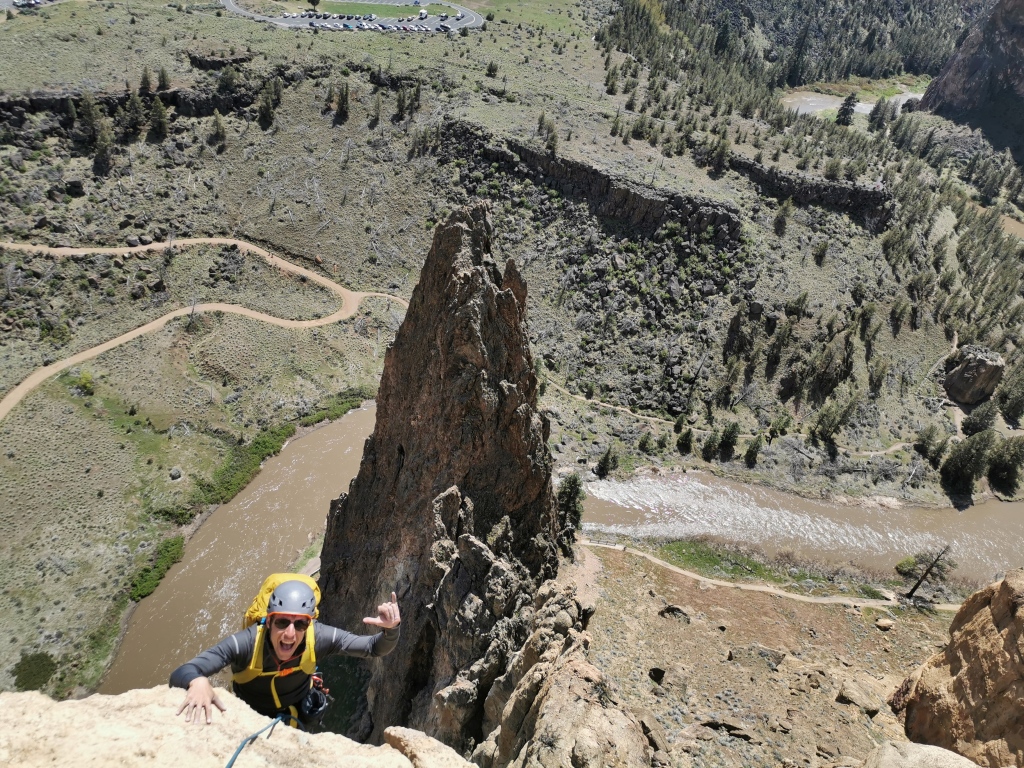Climbing in Smith Rock, Oregon
We’d been journeying for half a month so far on our year of adventure as we drove into Oregon at the beginning of May, keen on craft beers in Bend, climbing in Smith Rock, and some of that famous central Oregon desert heat. Wind had plagued us nearly our entire trip however, and Oregon offered no reprieve. Our first few nights were spent at Skull Hollow campground, a charming and rustic site near Smith Rock state park; unfortunately, our over-zealous cowboy campsite neighbours and their truly horrific late-night karaoke sessions drove us away pretty quick. After relocating to the campsite at Smith Rock (affectionately known as ‘the Bivy’) we settled in to enjoy central Oregon and our temporary home in the birthplace of sport climbing.
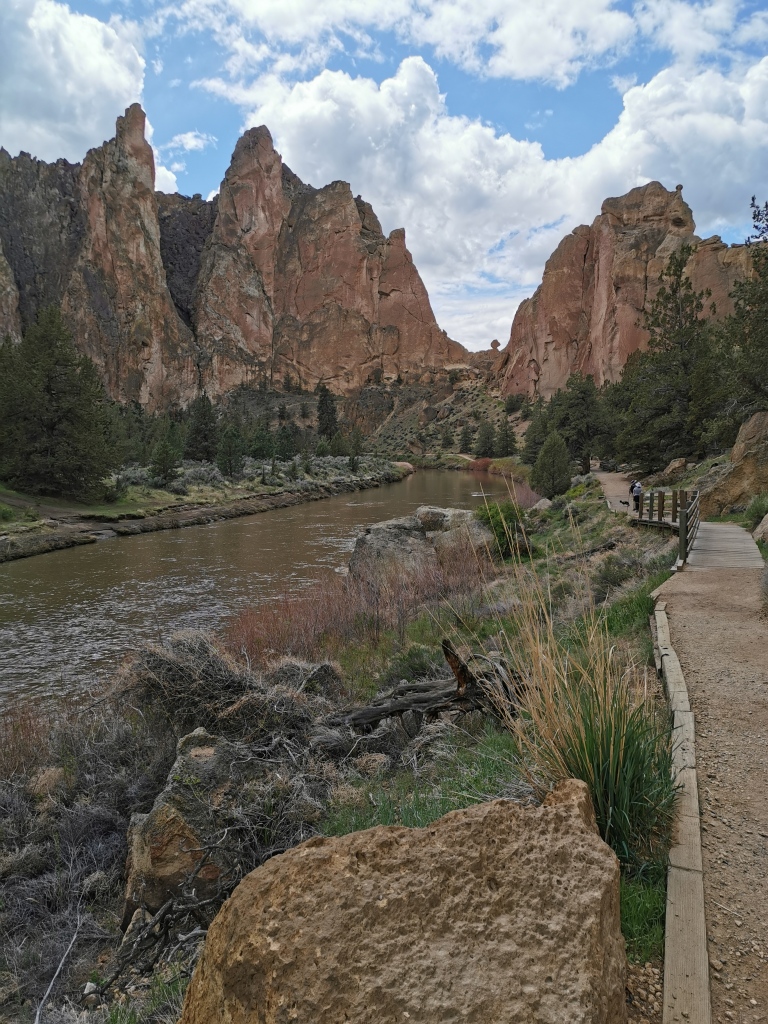
Smith Rock is an unlikely cluster of sharp peaks and stunningly coloured rock rising up from mile upon mile of green American ranch land. It was formed, as you might expect, by volcanic activity, giving birth to epic spires of tuff and iconic basalt columns ideal for rock climbing. Indeed, Smith Rock is thought to be the birth of sport climbing in the United States, a style of climbing in which climbers clip their rope to bolts pre-placed in the rock as they ascend routes. The park is home to numerous cutting-edge routes, and houses a huge portion of extremely difficult climbs that attract pros from all over the world. The park is also criss-crossed by wonderful hiking trails through the main canyon and upon the ridges. The unique rock, wonderful hiking, and world-class climbing attract masses of visitors each and every day. For climbers in particular, Smith Rock is something of a mecca; it’s a must-visit park for diehards and climbing history buffs alike.
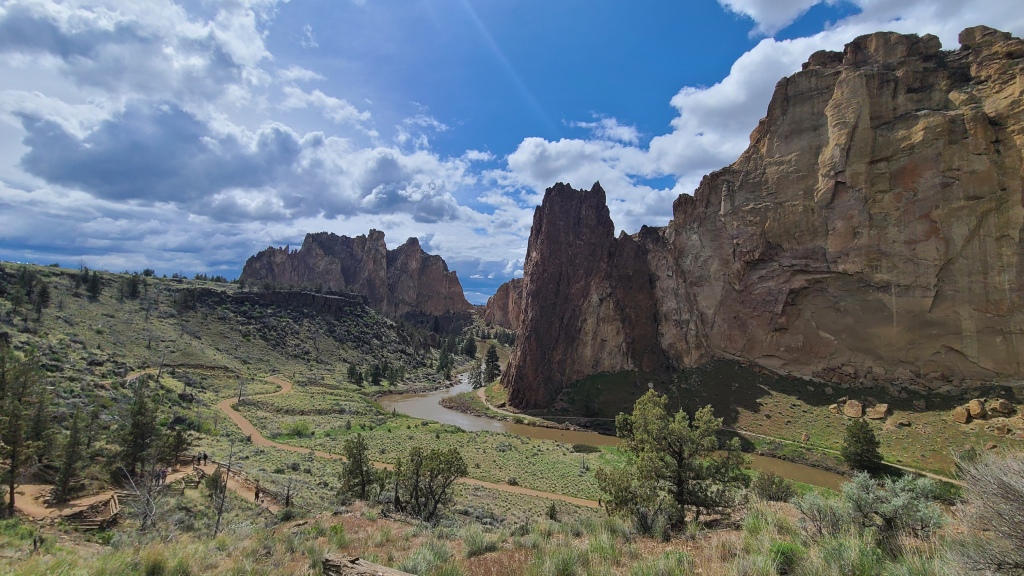
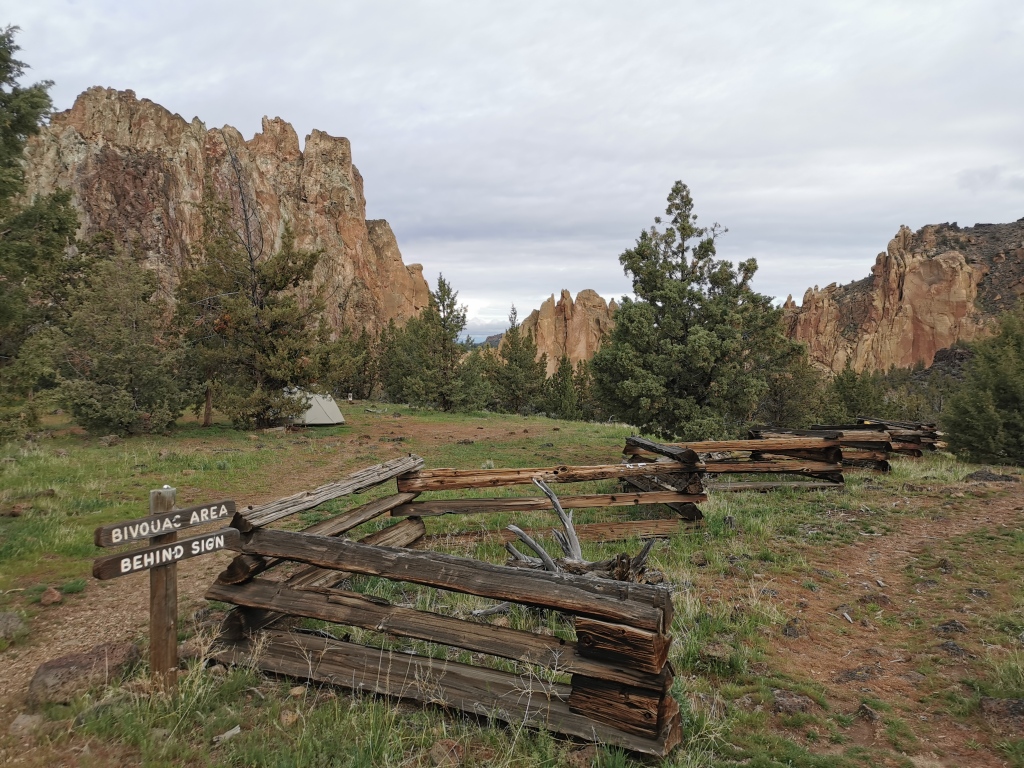
Chris and I settled into ‘the Bivy’ campsite for a long stay, around 10 days. Of all our campsites so far, this was our favourite, due to a communal cooking area, clean washrooms, hot showers, proximity to the climbs, and of course, price. Every morning after breakfast, we’d make the trek into the park, weighed down by rope, harnesses, draws, cams, and shoes. Approach times varied each day, which I particularly enjoyed (good exercise when you want it, and avoidable when needed). For quick access, easy climbs, Rope De Dope crag was only a short 10 minute walk from the campsite. For epic and iconic sport routes, a steep descent into the canyon, followed by a crossing of the narrow footbridge over the Crooked River, led to popular (and packed) crags such as Morning Glory Wall, the Dihedrals, and the Christian Brothers, all in about 15-20 minutes from camp. The uniquely-coloured Red Wall lay on the side of the aptly-named Misery Ridge trail, a very steep hiking path leading straight up and around the back of the massif. For those willing to sweat, hiking to the high-point of the Misery Ridge trail offers a glimpse of one of the most famous features in the park: the free-standing pillar known as Monkey Face, so named for the jungle animal seen in profile on the side of the rocky outcropping. Monkey Face is home to some of the most difficult and flashy routes in the park. A viewpoint at the top of the trail allows visitors to watch some of the best climbers in the world test their athletic prowess on some of the hardest climbs imaginable. The backside of Smith Rock provides welcome morning shade, as it is west-facing. And far north, towering above the iconic spires, is the Marsupials region dominated by the Wombat rock face, featuring the high point of the entire park for those willing to undertake the hour-long approach.
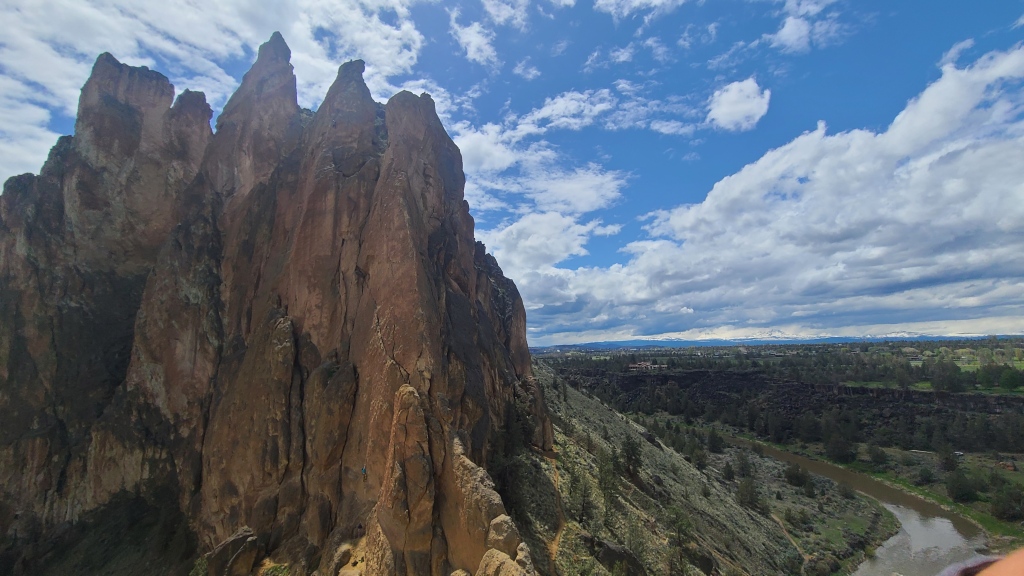
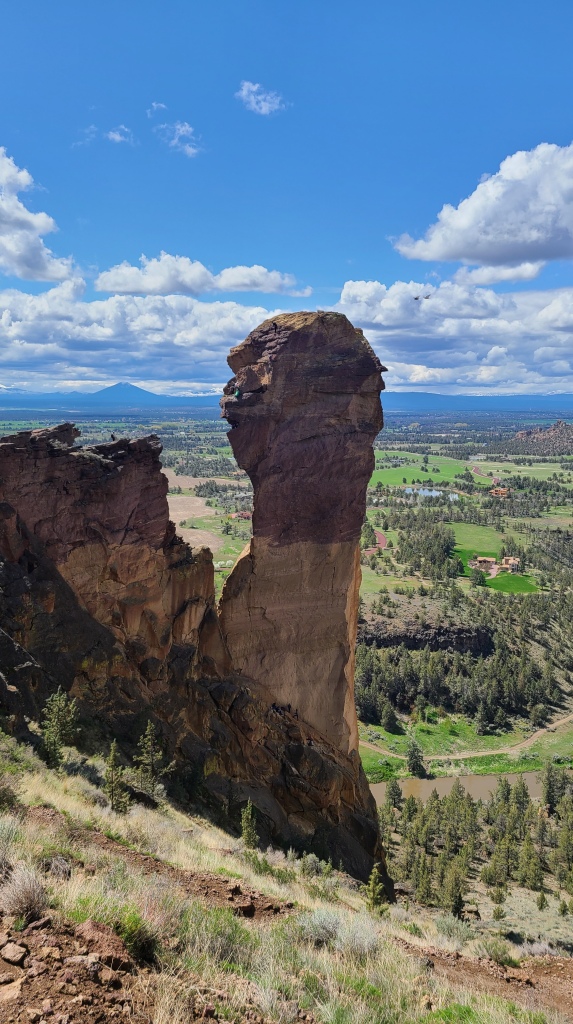
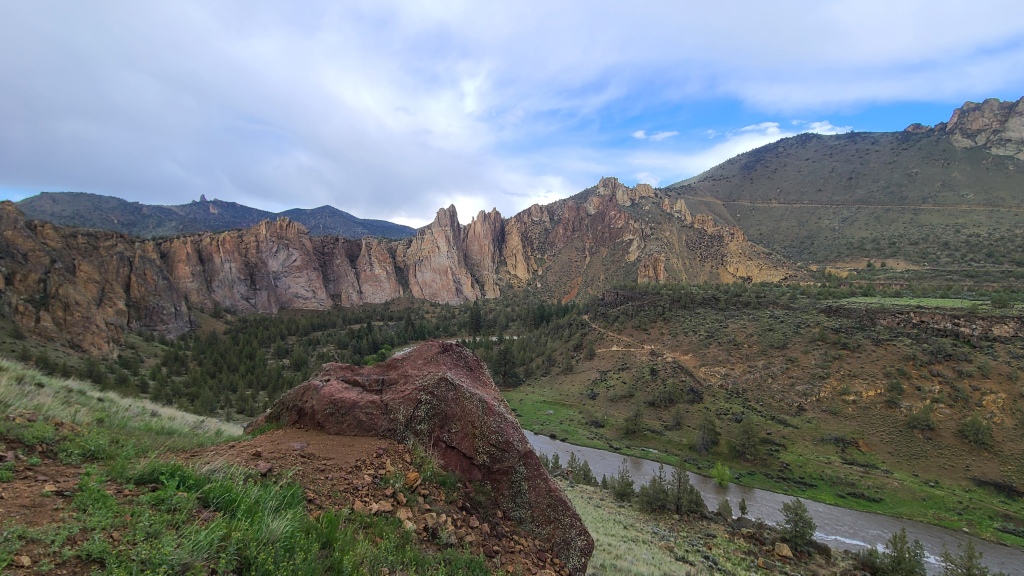
We settled into climbing, trying to cross off as many cliffs, spires, trails, and classic routes as our abilities and time allowed. Despite some high winds, and a day or two of uncharacteristic downpours (including one complete misread of the weather forecast that ended in us rappelling several pitches in the pouring rain off the back of Smith Rock Group), we were fortunate to experience a large swath of the park in classic Smith Rock desert heat.
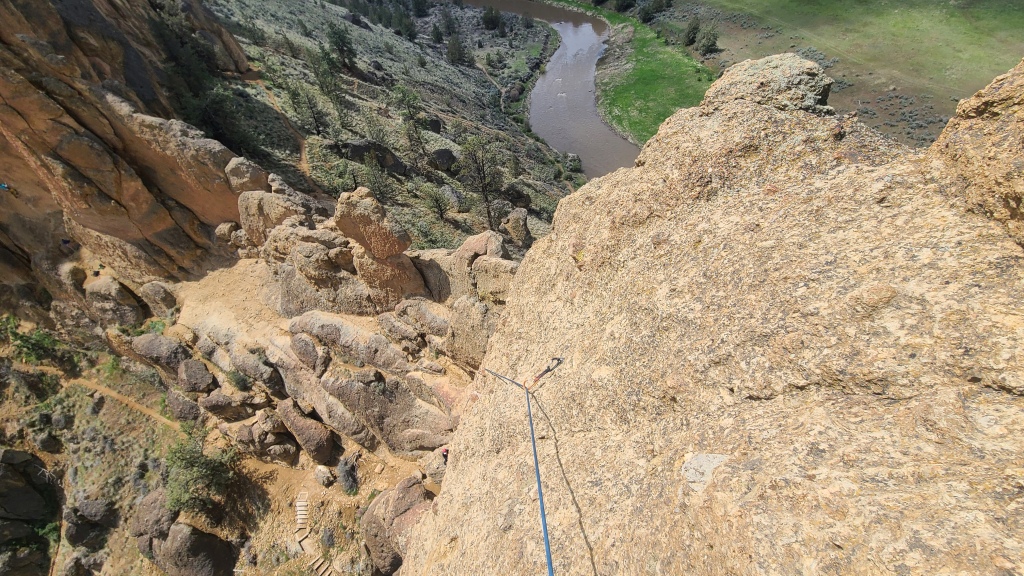
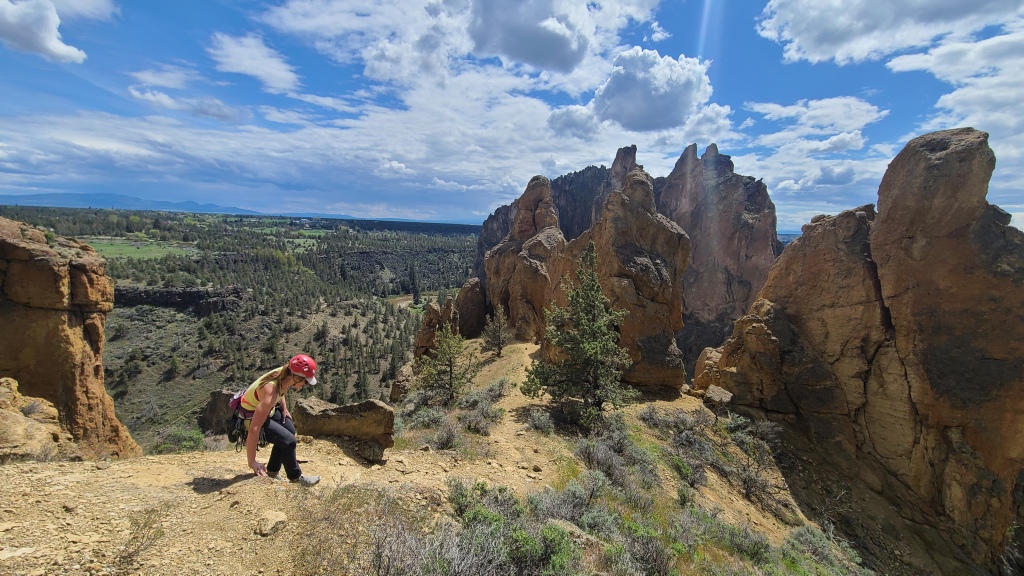
Some highlights of our time in Smith Rock include:
- An invite to a climbing festival from a new crag friend, held next door to the park in a downpour resembling the End of Days. The field in which it was held quickly became a muddy quagmire as everyone huddled under a large tent for shelter. We were treated to dinner, and a panel discussion by some famous local climbers (including Alan Watts, the father of Smith Rock climbing), and a screening of the latest Reel Rock climbing film. We also learned from the locals that apparently it ‘never rains’ in Smith…
- Absolute classic climbs: Voyage of the Cow Dogs, with a stunning position on the final pitch, towering above the canyon; Five Gallon Buckets, possibly the single most popular climb in the entire park, dominated by ‘heucos’ (depressions or pockets in the rock, varying from finger-sized to full-body-sized); Spiderman, a ‘trad’ route with a fun roof (we actually watched a man free-solo this climb (ie: no ropes) – both up AND DOWN – before we started); Bird in a Rut, an epic on the Wombat featuring a tight dihedral corner that left my knuckles bleeding; Phone Call from Satan, possibly one of the best outdoor climbs I’ve ever done in my life, with a real gym-y feel; Butterknife Arete, Chris’ strongest lead climb to date, thin and windy; and the Asterisk Pass scramble – not technically rock climbing, but the pass, featuring a large, improbably balanced boulder, is just too cool not to mention.
- Trail running the Misery Ridge loop around the whole park in the morning to beat the heat. Absolutely fantastic run, with steep climbs, stunning views, shade when you need it.
- Huckleberry ice cream from the Rock Hard gift shop next to the campsite.
- Witnessing the Monkey Face pillar. Ever since a friend of mine told me his entertaining story of aid climbing Monkey Face (it’s actually one of the first climbs I ever learned about as a new climber), I’ve wanted to check it out. While climbing it ourselves didn’t pan out with our schedule, I’ll certainly be back to climb it, and very much enjoyed the first glimpse of it that we received. What looked like a wedding was taking place on the improbable spire, with men in dark suits climbing up, followed by a heavy haul bag of what I hope was great camera gear and some champagne. We also got to witness a phenomenal climber tackling the infamously difficult route, Just Do It, one of the hardest in the whole park (at 5.14c), and what was once the hardest route in the entire country.
- The generally stunning views every which way you look: towering rock spires, fun caves, pocketed honeycomb-textured rock, a rainbow of colours, the twisted Crooked River carving out its path, desert sage, sweet juniper, towering black-red basalt framing the river, and the stunning skyline of the snow-capped Cascade mountains. As part of our Year of Adventure, Chris and I aim to climb many of the Cascade volcanoes, some of which are observable on the skyline from Smith Rock, such as Mt Hood, the Sisters, Three-Fingered Jack, and Mt Jefferson.
- The wildlife. Sure, the morning cacophony of birds nesting in the nearby Smith Rock Group takes some getting used to, but the density of birds here is unbelievable. I won’t pretend to know all the species, but days are frequently pieced by the screeching call of eagles, and it’s not uncommon to find yourself being circled by groups of majestic falcons as you belay on the side of a rock wall, or to climb a remote and precipitous rockface only to find a chubby, clumsy Canadian goose honking on a rock ledge near you. Deer and marmots visited our campsite several times, approaching surprisingly close, and we encountered all sorts of creatures, such as lizards, snakes, and frogs, daily on the trails, including one very curious rattlesnake who proved itself to be a formidable rock climber.
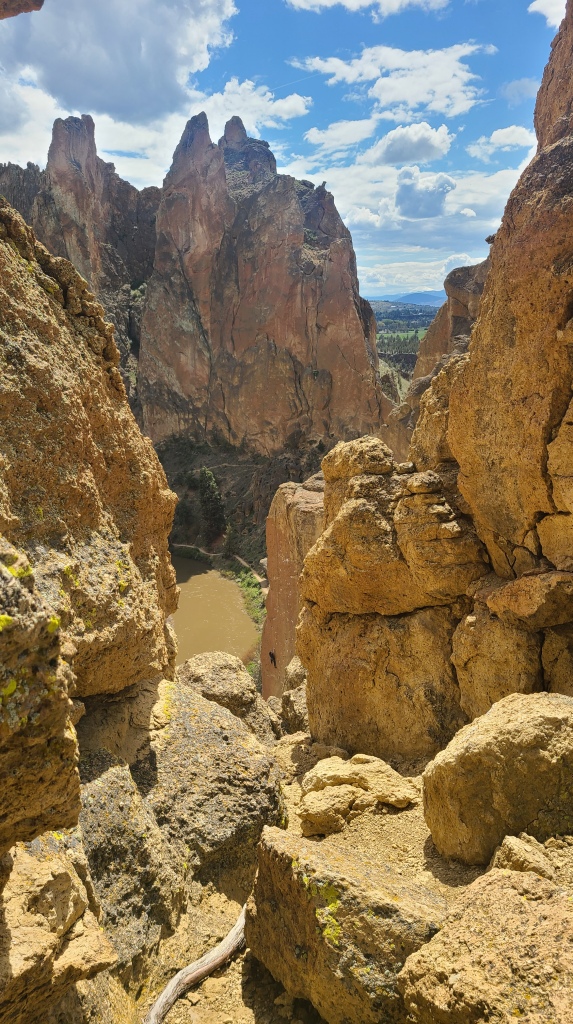
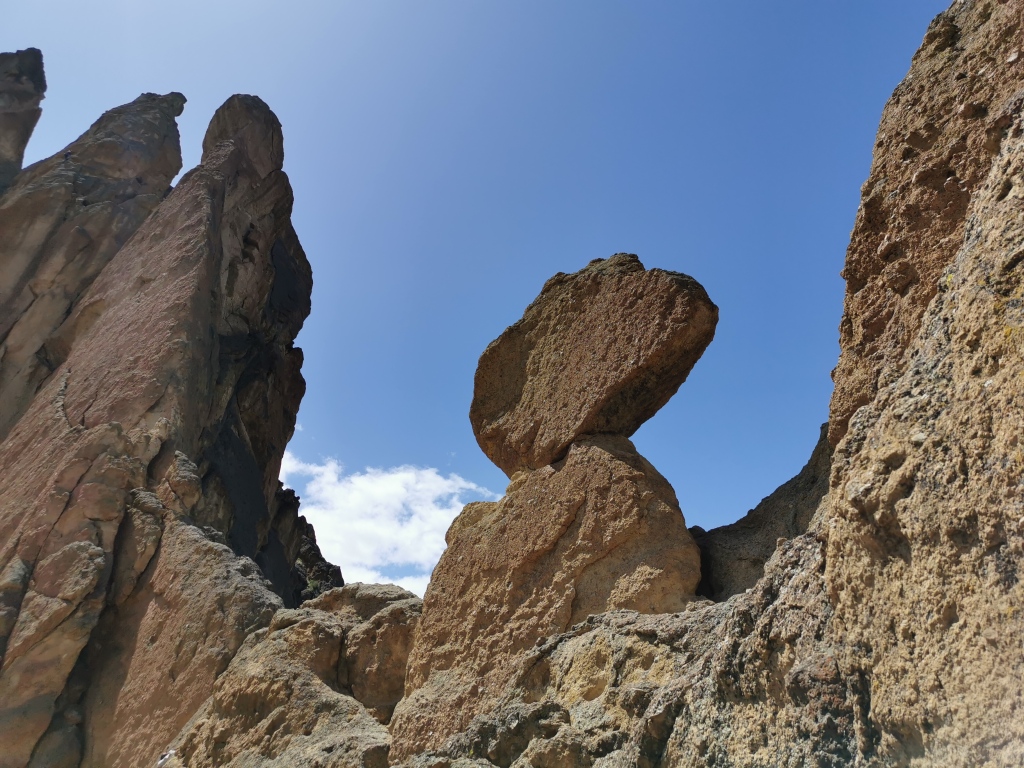
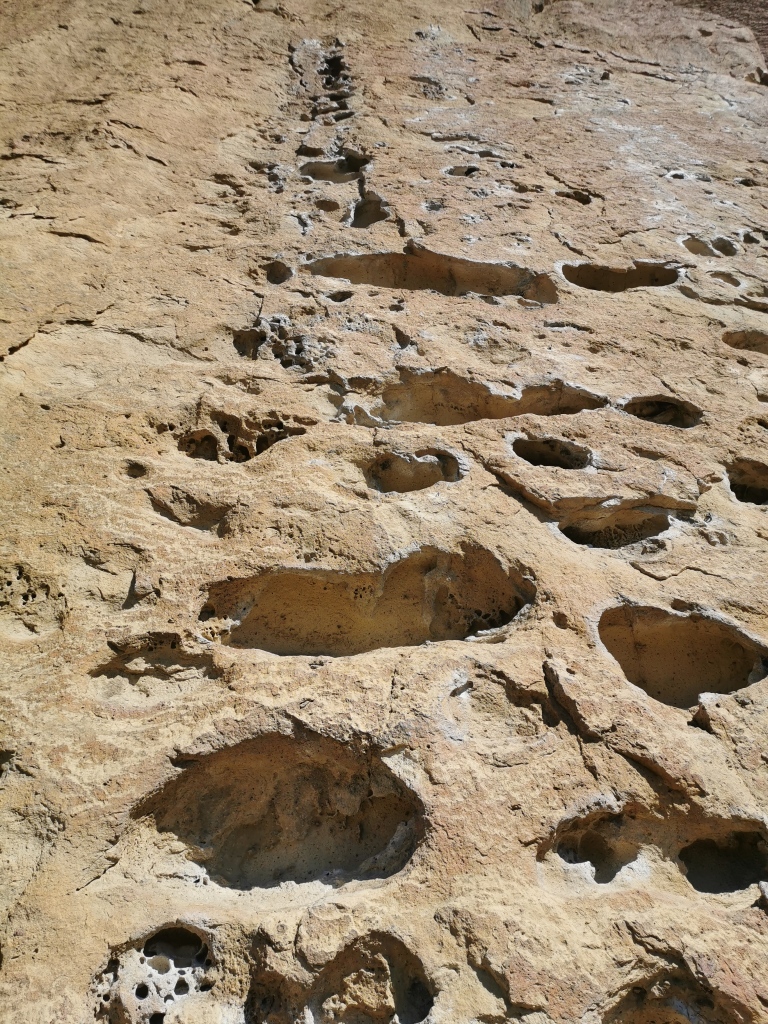
As our time in Smith Rock ends – we’ll be moving off to seize a weather window to climb Mt Hood, about two hours north of Smith – part of me wishes we had more time here, but such is the nature of our travels; we must spend less time than what is needed to truly appreciate these amazing places in which you could spend a lifetime exploring. But only a month into traveling, and I’ve already worn a hole in the toe of my climbing shoes, which is as good a marker as I need that I’m living my best life on the road.
